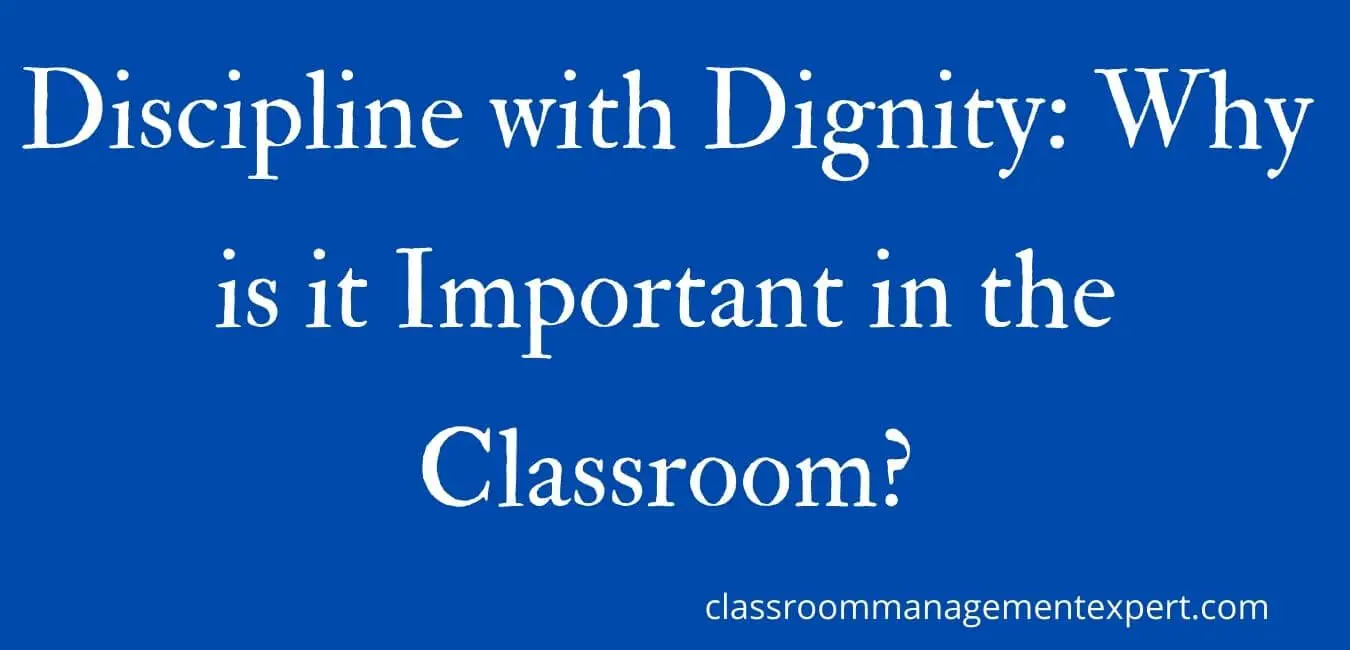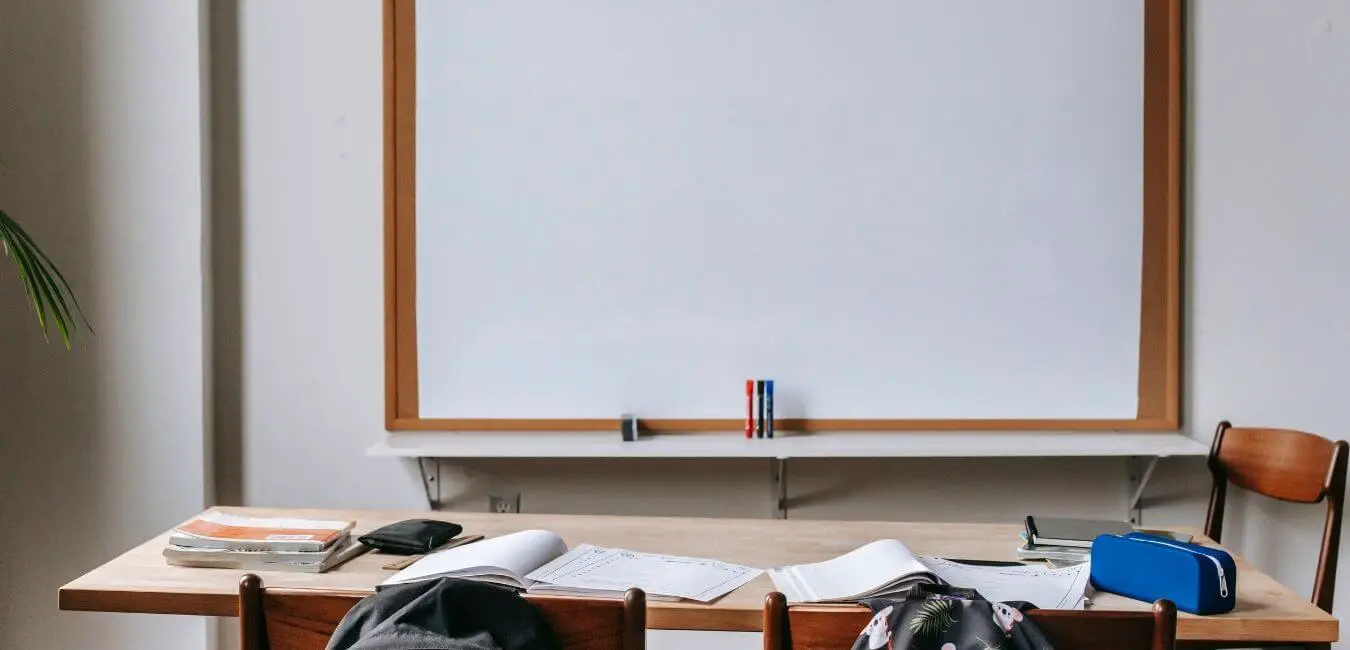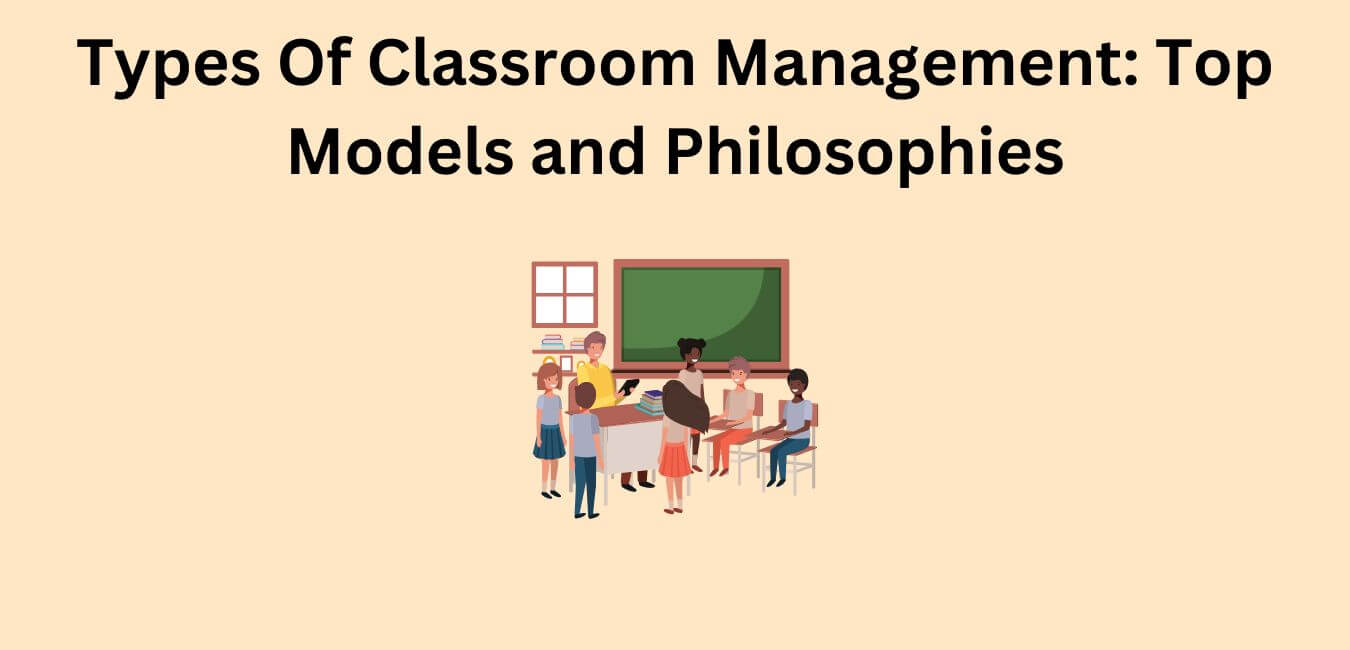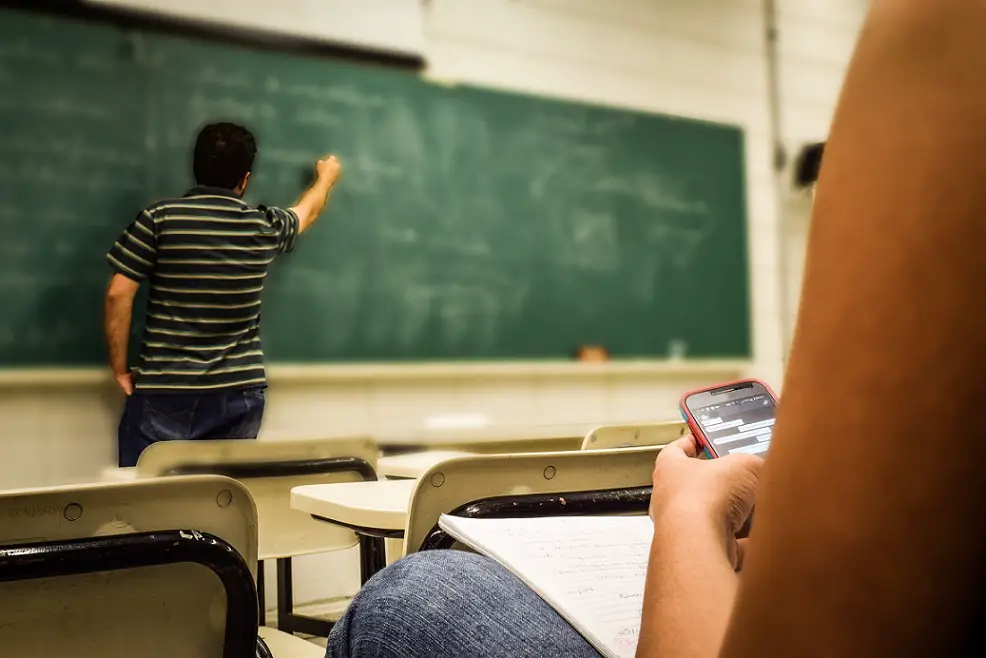Discipline is a cornerstone of any educational institution, and it is especially important in the classroom. The purpose of discipline is to ensure that students are able to learn and have success in their classes.
When discipline is done respectfully and with dignity, students are more likely to respect authority figures and follow the rules. This not only ensures that they get the education they need, but also teaches them valuable life lessons.
Also, discipline with dignity is important in the classroom because it sets the tone for how students are expected to behave. When students know that they will be treated with respect, they are more likely to behave respectfully.
Additionally, discipline with dignity helps create a positive learning environment in which students feel comfortable asking questions and participating in class discussions.
In this article, I will help you understand “Discipline with Dignity” and the theory behind it. I will also help with strategies to help you implement it in your classroom.
What is Discipline with Dignity?
Discipline with Dignity (DWD) is a theory proposed by Curwin and Mendler (1988) that attempts to provide a framework for thinking about discipline as both respectful of students and effective in terms of preventing and managing student misbehavior.
Assumptions of the theory:
1. There is no ‘one-size-fits all’ strategy for classroom management.
2. Effective discipline comes from the heart and soul of the individual teacher.
3. Everyone in the school setting must be treated with dignity.
4. Effective discipline can occur only when decisions for managing student behavior are based on a school-wide core value system that maintains the dignity of each student in all situations.
5. Both students and the teacher have needs that must be met.
6. A discipline problem is a means of conveying to the teacher that something is wrong in the classroom.
7. Teachers look at their own actions as being critical to those of their students.
8. Discipline should be preventive rather than reactive.
The Needs of Students and Teachers in the Classroom
According to Curwin and Mendler (1980), the needs of students and teachers fall into one of four sets of needs:
1. Personal identity
A positive self-image is key to having a healthy personal identity. For students, this means they need to feel good about themselves in order to learn and grow. For teachers, it means they need to feel good about themselves in order to be effective educators.

Both students and teachers need validation and recognition from others, but these external factors should not be the only things that define them. It’s important for each individual to have a strong sense of self-awareness and understand their own strengths and weaknesses. This way, they can work on improving themselves while still accepting themselves for who they are.
A positive self-image allows people to take risks and explore new opportunities. It also enables them to build better relationships with others because they are more confident and open-minded. When people feel good about themselves, it shows in everything they do.
2. Connectedness
Connection is a basic human need. It can be met through a sense of positive affiliation with others, which is essential for both students and teachers. A sense of connectedness allows for the development of relationships that are based on trust and mutual respect. These relationships provide a support system for individuals, as well as allow for the exchange of ideas and new perspectives. In order to create a sense of connectedness in our schools, we must first understand the needs of our students and teachers.

It has been established that a sense of connectedness is essential to human beings. This connection can be met through a sense of positive affiliation with others, which is seen as the need to belong. The need to belong is essential in order for students and teachers to feel connected in their schools and classrooms. According to Maslow’s hierarchy of needs, the need to belong is a basic human need that must be met in order for people to thrive.
There are many ways for schools and classrooms to create a sense of connectedness among their students and teachers. One way is by providing opportunities for students and teachers to get to know each other better. Schools can do this by hosting events such as potluck dinners or holiday parties, where students and teachers can socialize with one another in a relaxed setting.
3. Power
Power is one of the most beloved needs of humans. One of the needs of both students and teachers is power. Power can be met by having a sense of control over one’s own life.
The more in control someone feels, the more powerful they are. There are many ways to feel in control. Having choices, making decisions, and being able to act on them all contribute to a feeling of mastery.
In order for students and teachers to have this power, they need an environment that supports it. This includes having trust, respect, and autonomy.
4. Achievement
In order for students to achieve, they need the right tools and support. This includes both academic and emotional support. Teachers are essential in providing this support.
They need to be able to meet the needs of all their students. Some students may need more help than others, but all students should be able to achieve academically.
Achievement can also be met by being enabled to achieve academically. This means having access to the resources needed to learn and grow.
This includes a good education, as well as emotional support from teachers and other adults in the community. Students who have these things are more likely to succeed in school and in life.
Step-by-Step Discipline with Dignity
1. Work with students to create a classroom principle that reflects the type of classroom you desire.
Classroom principles are important to develop and work with students to create a classroom that reflects the type of learning environment you desire.
It is important to have clear expectations and consequences in place that help guide student behavior. In order to foster a positive and productive learning environment, educators must be proactive in creating and reinforcing class principles.
Some ways to work with students on developing class principles include: establishing classroom rules together, brainstorming what is important to each student, setting goals for the year, and revisiting class principles as needed.
Classroom rules should be few in number, but clearly stated. They should be developmentally appropriate and relevant to the content of your course.
Brainstorming what is important to individual students allows them to feel heard and valued in the classroom community. This also helps create buy-in for following class rules.
2. Determine the “flag rules” that you require in your class.
“Flag rules” are the most important rules in your classroom. Another step in setting discipline rules in your classroom is to determine the flag rules that you require.
What type of behavior do you want to see from your students? The following are some general flag rules that can be used as a guide:
1. Respect yourself and others – This includes being respectful of people, their property, and school property.
2. Follow school rules – This includes being on time for class, coming prepared with materials, and following the teacher’s instructions.
3. Be honest – This includes telling the truth and not cheating on tests or assignments.
4. Stay safe – This includes walking in designated areas, not fighting or bullying others, and using appropriate language.
3. Establish classroom rules with the students. These should include the flag rules you identified.
Creating a classroom climate of mutual respect and cooperation is one of the primary goals of any educator. One way to foster this type of climate is to establish and enforce classroom rules with the students.
By doing so, you are teaching them how to behave in a civilized society. In addition, by working together to create the rules, you and your students are developing a sense of community in your classroom.
Classroom rules should be established with input from the students. Students should have a voice in what is expected of them in terms of behavior. In addition, classroom rules should be based on the school’s code of conduct and the law.
A good way to start establishing rules is to have the students vote on a set of class expectations. This will give you an idea of what is important to them and can help avoid any conflict down the road.
In addition to class expectations, there are some basic ground rules that should be established for all students to follow such as no yelling, no leaving without permission, etc.
While it’s important for students to know what is expected of them, it’s also important for them to understand why these expectations exist.
4. Establish a range of consequences to be used when rules are broken.
Establishing a range of consequences to be used when rules are broken is an important part of classroom management. It helps ensure that students know what to expect when they break the rules, and it also helps keep them accountable.
There are a number of things to consider when establishing consequences, such as the severity of the offense, the age and maturity of the students involved, and any special circumstances that may be involved. It’s also important to have a clear system for enforcing these consequences so that everyone is on the same page.
Some common consequences for rule-breaking include verbal warnings, loss of privileges, detention, and suspension or expulsion. It’s important to tailor these consequences to fit the specific situation and the individual students involved.
5. Evaluate your contribution to misbehavior when it occurs.
It can be tough to objectively evaluate your own role when misbehavior occurs in the classroom. However, it’s important to take a step back and assess your part in the situation.
After all, as a teacher, you play a key role in creating a learning environment that is conducive to success.
When misbehavior does occur, ask yourself the following questions:
1. Was I clear about expectations?
2. Did I provide enough structure and routine?
3. Was I consistent with rules and consequences?
4. Did I respond appropriately to misbehavior?
5. Was I able to maintain my composure?
6. Did I provide positive reinforcement?
7. Was there anything else I could have done differently?
It’s important to be honest with yourself and acknowledge any areas where you could improve.
6. Provide a consequence from the list of choices based on the individual needs of the student.
One of the most important things you can do is provide a consequence from the list of choices based on the individual needs of the student.
This helps to ensure that all students are treated fairly and that each student is held accountable for his or her actions. Additionally, it allows educators to tailor consequences to specific students, which can help improve their behavior.
By providing a consequence from the list of choices based on the individual needs of the student, educators can help ensure that all students are able to learn in a safe and productive environment.
7. Create personal contracts for those students who cannot benefit from traditional consequences.
It is becoming more and more common to see students in school who are unable to benefit from traditional consequences.
This could be due to a variety of reasons, such as a disability or an emotional disorder. For these students, it is important to create personal contracts that outline specific goals and expectations.
These contracts can help to ensure that these students are held accountable for their actions, while also providing them with the support they need to succeed.
The 70-20-10 Principle in the Classroom
According to the 70-20-10 Principle, discipline is not as important of a concern as many people believe it to be. The theory suggests that students can be divided into three groups in the classroom.
Out of these three groups 70 percent of the students in each group seldom breaking rules or violating principles.
The second group, which is 20 percent, consists of students who break rules on a somewhat regular basis. The final 10 percent are those who generally violate rules and are out of control most of the time.
A good discipline plan, according to Curwin and Mendler, is to control the 10 percent of students who regularly break rules without alienating or overly regulating the 20 percent who rarely do so, while not backing the 10 percent of chronic rule-breakers into a corner.
The Three-dimensional Discipline Plan
Prevention
The heart of the prevention dimension is the establishment and implementation of social contracts. Social contracts are an important part of managing a classroom and preventing discipline problems.
A social contract is a system where the students and teacher agree on the expectations for behavior in the classroom. This includes things like being on time, raising your hand, walking quietly in the hall, etc.
By having a social contract, both the teacher and students know what is expected of them. If there is a problem with someone’s behavior, it can be addressed quickly and easily because everyone knows what the rules are.
Social contracts also help to build trust between the teacher and students. When students know that they can trust their teacher to enforce the rules fairly, they are more likely to follow them.
And when teachers have a clear understanding of what their students expect from them, they can be better prepared to manage their classrooms effectively.
Action
When faced with a discipline problem in the classroom, it is important to act quickly and effectively to prevent it from escalating. By taking swift and decisive action, you can avoid having minor problems turn into major ones. There are several reasons why it is important to act quickly when a discipline issue arises.
First, if a student knows that there is no consequence for their bad behavior, they are likely to continue doing it. In addition, misbehavior can disrupt the learning process for other students. Finally, a lack of discipline can send a message to students that disruptive behavior is acceptable.
It is, therefore, crucial to take action as soon as possible when a discipline problem occurs. This includes imposing consequences for bad behavior and communicating expectations to students. By doing so, you can help create a positive learning environment in your classroom.
Resolution
You need methods to manage the 10 percent of students who won’t obey the rules, who do not respond to the established consequences, and who are a danger to themselves and others. The best way to manage these students is to use a variety of methods.
Some teachers choose to remove students from the classroom and assign them punishment tasks such as cleaning the bathroom or making their own lunches.
Others use suspended or expelled students as a way to manage the problem behavior. Other teachers choose to use in-school suspension or expulsion as a way to manage these students.
The most effective method is the one that fits your classroom needs and philosophy of teaching.
Conclusion
In conclusion, discipline with dignity is important in the classroom because it sets a tone for how students are to behave and learn. It also models respectful behavior for students. By establishing clear and consistent expectations, and following through with consequences when they are not met, discipline with dignity can help create a productive learning environment.














